Gibraltar is in mind when I get up, this bit of UK at the southern tip of Spain. Leaving Los Angeles on flat roads gives me a feeling of easiness that I didn’t have for a long time. On the roads, there are no signs for Gibraltar, only Algeciras, which is the town facing it in the bay. But the way is pretty straightforward – to the south – , and used by many cyclists, alone or in groups. They are more numerous than the cars. The end of the road even has a reserved bike lane.
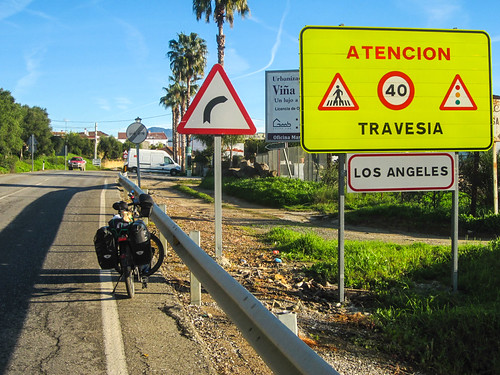

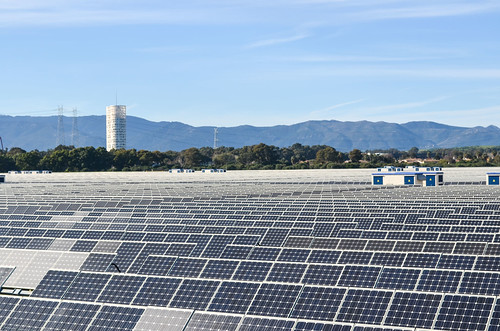
I reach the sea before noon. I am now in right at the Straight of Gibraltar, in the dent of the bay: on my right is Algeciras, the town and the (ugly) port, on my left is Gibraltar, the “rock” standing impressively out the sea, and the (ugly) cargo ships parked in front of it. There is tension between Spain and UK, who takes advantage of its marine territory in Gibraltar to park there ships that no one would want to see parked in their own country. A spillage or accident there would make much more harm to Spain than to the 5 km long shore of the Queen. Last but not least, in front of me is, so close, the African coast.
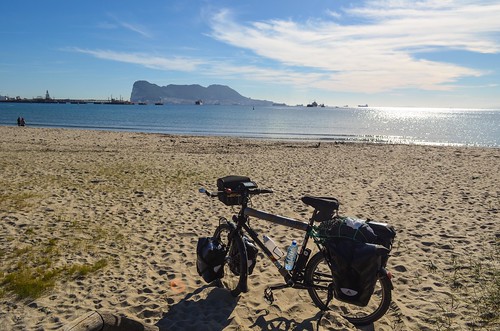
There are several options for taking a ferry to Morocco: from Gibraltar, from Algeciras and from Tarifa. Gibraltar is said to be more expensive but surely less troublesome than Algeciras, the heaviest traffic. Being in stuck among loaded cars and trucks at a bottom of a boat and entering Africa this way doesn’t cheer me up. I read on the internet that there are many ferry companies and various types of tickets. I remember the mess created by the ticket sellers in Dar-es-Salaam at the port to Zanzibar, and I really want to avoid that with a bike. I discovered also lately that most of the ferries to Tangier actually don’t go to Tangier but to Tanger MED, which is a new port built 40 km away from the city. And I don’t want to end up there unprepared at night.
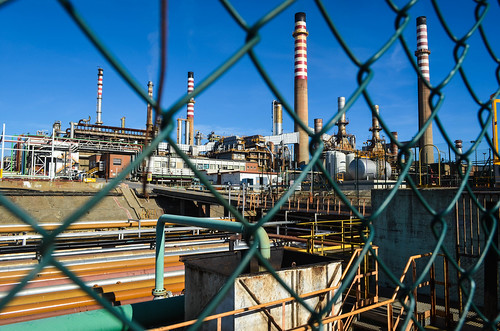
So I decide to try my luck in Gibraltar, even though one ferry company website didn’t return any trip result for today. The “rock” is now obviously there, in front of me, but there are still no road signs about it, as if Spain wanted to keep it undiscovered.
The first sign appear at the very last roundabout, where the cars are already jamming the road because of the customs. I overtake easily a Ferrari, pass through the customs quickly, and am now in the United Kingdom (I don’t count it as a new country for my stats though).

I cross the airport, compulsorily as it is built on the only flat area of the land of Gibraltar, piece of land also shared with the entrance road and customs, and head directly to the port. This one is closed because of the absence of traffic today, so I’m bound to quickly visit Gibraltar and move on to Algeciras to find a ferry.
I can’t really do interesting shopping as it is Sunday (until now I had no reason to keep track of the days of the week) and nearly only food stores are open. I fall for a triple burger since they accept euros on the top of the official Gibraltar pound (1 GIBP = 1 GBP).

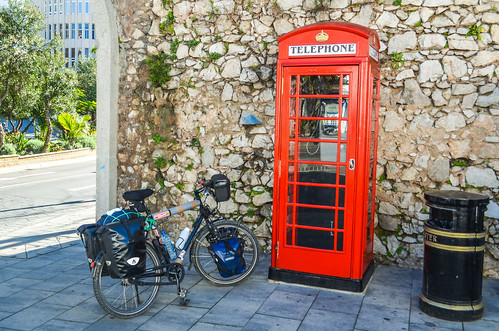
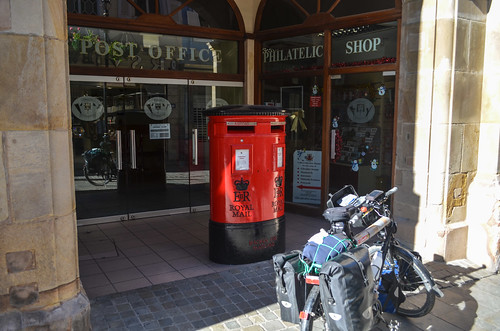

My trip to Gibraltar ends (I’d have to visit another day the kilometers of defense tunnels drilled inside the rock) but I am not yet in Algeciras. It is just across the bay, but the only way to reach it is by land. There is no road along the shore, and no bridge (not anymore) over the shallow stream that breaks the continuity of the beach. For a while I contemplated crossing it, I would get water up to the waist for less than 5 meters. But unsure about the bike and the sand consistency, I return to the only reliable option, the only bridge, further in the north: the highway.
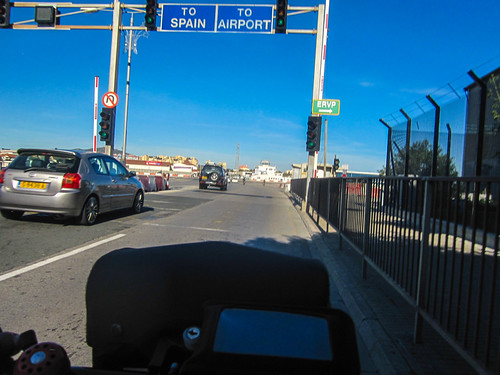
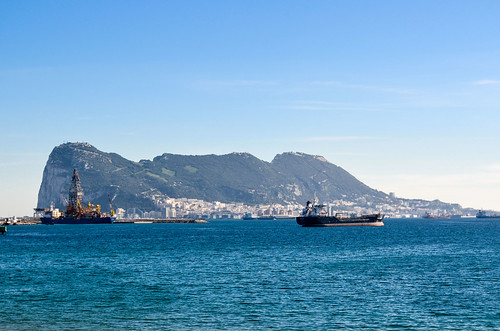
It looks like I have no option other than taking the highway for a while. The port of Algeciras is facing the port of Gibraltar, a little swim away, but joining both is a 25 km ride by the road. The stress generated by the cars driving at highway speed, right next to me, makes me focus on staying carefully on the breakdown lane. I maintain incidentally a nice average of 30 km/h.
During these stressing kilometers, I see an exit sign for bicycles, with a small opening of the highway barrier into a dirt field. Hmmm … so they really intended to make the bicycles ride the highway breakdown lane as a bicycle lane? This kind of exit into nowhere is another helpless urban planning and I decide to stay on the efficient highway until entering into Algeciras.
One travel agent on the way had warned me against disembarking in the evening with a bicycle in Tangier MED, the destination for the ferries from Algeciras. It would be a mess, I would be left stranded there, among families with tons of luggage, or at best cheated on and taken on a bus to Tangier with my bike. Instead, he advised me to take a bus to Tarifa, and take the passenger ferries there, which runs until late, directly to Tangier city. Tarifa is a town with a smaller port than Algeciras, but closer to the Moroccan coast. It is the only place where ferries transport people (and a few cars) directly to the port of Tanger, just behind the medina. As I have 2 hours of daylight left, I can even cycle to Tarifa, which is what I do straight without stopping in Algeciras.
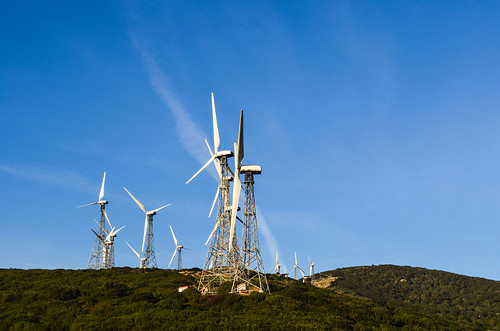
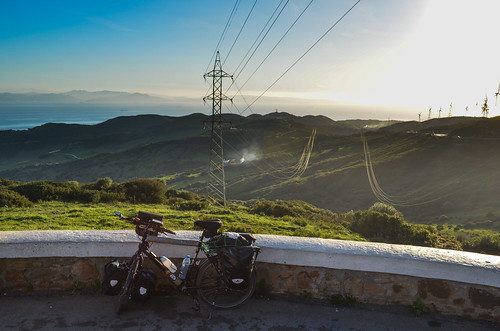
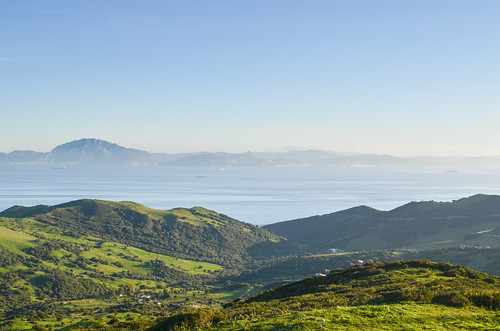
The road, the only one between Algeciras to Tarifa, is taking me up a hill at 400 m before going down again towards the coast. It is a little busy but very nice once I reach a mirador with the best views over Morocco. With the gentle light of the end of the day, and a perfect visibility, I can spot all the boats spanning between Ceuta and Tanger MED.
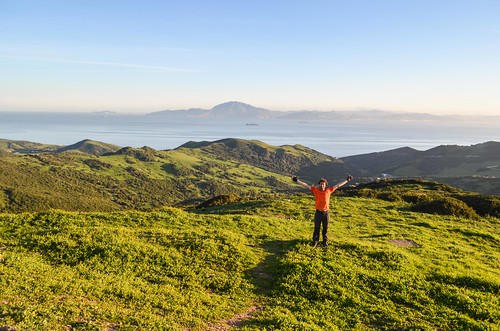
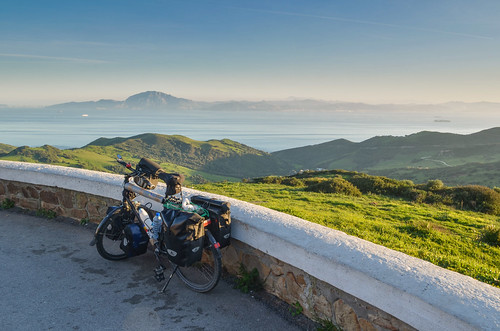
I quickly cycle downhill through the still wind turbines until the small town of Tarifa – costa de la luz, costa del windsurf. It is said to be an excellent spot for windsurfing, which also explains why there are so many wind turbines around. But I find it quiet for now.

The office of the port has two windows, for the two companies operating from here. Both charge 33 € per passenger, but the clean-looking one with the blond lady inside charges an additional 15 € for a bicycle, while it is free with the other. My decision is quickly made as there is one departure every hour and the trip is 35 minutes for both companies.
Until my departure, I “visit” the southernmost point of continental Europe: la Isla de Tarifa. It is where the Atlantic ocean meets with the Mediterranean sea. I also watch my last sunset in Europe.

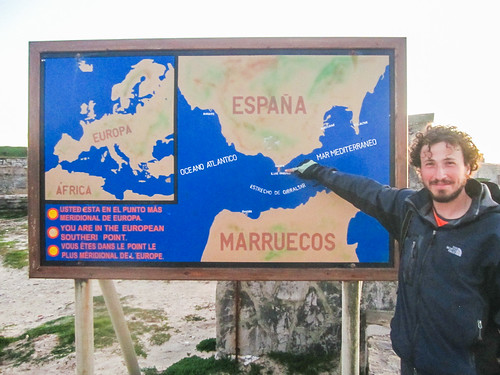
Back to the port, I have to queue with the cars, waiting for the ferry to be ready. This is where my heavy 20 kg of steel and 20 kg of luggage, of which I am very well aware during the mountain ascents, make me feel tiny between cars packed with luggage and the huge steel wall of the ferry.
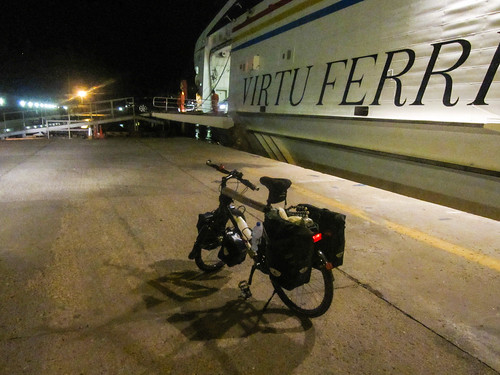
The bike is tied downstairs, while I am sitting upstairs watching Africa, where I will take well-deserved holidays after 3500 km of amazing cycling from Switzerland, getting closer. The adventure begins …








Merci,
Ca continue au Maroc, de la route, des trous, et bien plus de gens que dans le froid de l’hiver européen …
D’Artagnan…
Bonjour JB.Bravo pour ton périple jusqu’au sud de l ‘Europe.
Tes photos et récits sont toujours aussi intéressants.
Je te souhaite une bonne continuation pour la suite des évènements que je ne manquerai pas de suivre.
A bientôt.
Laurent
AlinC,
bonsoir JB,
Ton sourire sur la photo avec l’Europe et l’Afrique montre ta satisfaction d’être arrivé au premier grand objectif de ton périple et l’impatience de poser ton vélo sur la terre Africaine .
J’espère que tu as bien profité des jours de repos pour recharger les batteries physiques et mentales.Une autre aventure commence….bon courage pour les km à venir .